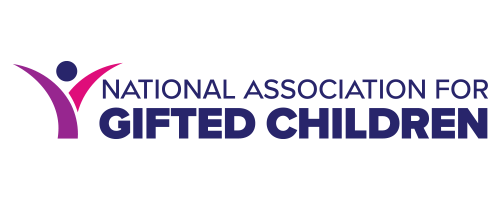Public Policy Update - November 25, 2025
Federal Government Reopens Under Temporary Agreement
On November 12, Congress approved a continuing resolution (CR) to reopen the federal government and maintain operations through January 30, 2026. The stopgap measure provides education and other domestic spending funds at current Fiscal Year (FY) 2025 levels for 9 of the nation’s 12 spending bills through January 30, 2026; and it finalizes FY 2026 spending for three federal appropriations bills (Military Construction, Agriculture, Legislative Branch). The record-breaking 43-day shutdown left deep impacts. As widely reported, tens of millions of Americans missed their food benefits under the Supplemental Nutrition Assistance Program (SNAP) on November 1, and many Head Start programs did not receive their annual funding. This disruption affected more than 65,000 children enrolled in centers whose contract year started on October 1 or November 1. While certain centers managed to stay afloat, others were forced to close and now face uncertainty about reopening. The CR also includes a provision to reinstate federal workers terminated through a reduction in force (RIF) during the shutdown, including impacted employees of the Departments of Education and Health and Human Services. Those jobs will be restored for the duration of the CR, but it remains unclear whether they will be protected by Congress after January 30. The logjam ended this week due to an agreement reached between Senate Republicans and eight Senate Democrats that restored all RIF’d employees and required back-pay for every furloughed federal employee whose pay was uncertain due to statements by the White House. The deal also included verbal agreement by Senate Leader John Thune (R-SD) to hold a vote in mid-December on the much-debated healthcare subsidies that expire at the end of the year. While lawmakers on both sides continue to blame the other party, Senate leaders remain optimistic about advancing the remaining funding bills. Next week, the Senate aims to advance several spending bills, including Labor, Health and Human Services, Education, and Related Agencies, and the Commerce, Justice, Science bills. Despite some forward momentum, the underlying impasse between parties remains, with House Republicans seeking partisan appropriation bills that slash spending and do not align with the Senate’s bipartisan approach. It will be challenging to finalize bills that can muster the necessary 60 votes in the Senate, which means the fate of federal spending past the date of the CR is incredibly uncertain.
ED Moves to Transfer Programs to Other Federal Agencies, IDEA Spared For Now
On Tuesday, Secretary of Education Linda McMahon announced six interagency agreements (IAAs) with four agencies to “break up the federal education bureaucracy, ensure efficient delivery of funded programs, activities, and move closer to fulfilling the President’s promise to return education to the states." The IAAs shift programs under the Elementary and Secondary Education Act (ESEA) to either the Department of Labor or the Department of the Interior (for all Indian education programs). The ESEA shift includes the administration and oversight of funds such as Titles I, II, III, and IV-A, the Charter School Program, Statewide Family Engagement Centers, and others. When asked about the data backing both the lawfulness and strategy around these moves, the Secretary stated the IAAs are “proof of concepts” intended to “show how we can move different parts of the Department to show that they can be more efficiently operating in other agencies." The response from some Republicans was not positive, as Rep. Brian Fitzpatrick said Congress created the Department “for very good reason,” and he “will not allow” any alterations to the agency’s programs without transparency from Congress.“[W]e cannot allow any action that weakens the safeguards, services, or opportunities that families across this country depend on.” Education attorneys believe the Department has exceeded its legal authority in the use of IAAs for these purposes, and Republican Senator Lisa Murkowski (R-AK), a member of the Senate Health, Education, Labor and Pensions (HELP) Committee, said she views the administration’s actions as a way to go around Congress. “I strongly oppose the administration’s effort to circumvent the law by dumping critical programs onto other agencies simply because there are not sufficient votes in Congress to eliminate the Department.” Yet, Chairman Mark Walberg of the House Education and Workforce Committee gave the Department’s action a nod of full support. Senate Democrats, including Appropriations Vice Chair Patty Murray (D-WA), Senator Elizabeth Warren (D-MA), Senator Tim Kaine (D-VA), and others, spoke out against the IAAs in the press and on the Senate Floor. Advocates for programs authorized under the Individuals with Disabilities Education Act (IDEA) and the Rehabilitation Act of 1973 were surprised that these programs, which include oversight of vocational rehabilitation, were not included, especially given how public the Secretary has been about the Department’s intent to move them. With few details available, big questions remain about the IAA-related actions, including the timing and staffing of the moves. Additionally, this will complicate negotiations on the Fiscal Year 2026 appropriations bills, given the Senate’s bipartisan language in the Labor, Health and Human Services, Education and Related Services (Labor-H) that protects both ESEA and IDEA programs from being transferred or funds otherwise obligated to another agency. Stay tuned.
Read the Department’s FAQ about the ED IAAs here.
Congressional Democrats Decry Dismantling of Disability Labor Protections
A coalition of 56 Democratic lawmakers, led by Sens Elizabeth Warren (D-MA) and Tammy Duckworth (D-IL) and Reps Debbie Dingell (D-MI) and Lateefah Simon (D-CA), sent a letter to Secretary of Labor Lori Chavez-DeRemer on Tuesday condemning what they describe as the “most significant rollback of disability employment protections” in decades. The lawmakers criticized Chavez-DeRemer for proposing to eliminate key provisions of Section 503 of the Rehabilitation Act—such as hiring goals, data collection, and enforcement mechanisms for federal contractors—while also cutting staff and budgets for the Office of Federal Contract Compliance Programs and the Office of Disability Employment. They argued these changes would reduce accountability, limit job opportunities for people with disabilities, and increase dependence on government benefits. The letter further denounced the continued use of subminimum wage certificates under Section 14(c) and the removal of equal opportunity rules
in apprenticeship programs, accusing Chavez-DeRemer of dismantling bipartisan progress that has expanded economic inclusion for disabled workers. The lawmakers requested a formal explanation by December 11, 2025.
Read the letter here. Senate Chairman Introduces LIFE Act to Safeguard Against AI in Schools
Senator Bill Cassidy (R-LA), Chairman of the Health, Education, Labor, and Pensions (HELP) Committee has introduced a bill to ensure student privacy, cutting edge research, and teacher professional development as artificial intelligence (AI) expands its reach into America’s schools. Dubbed the LIFE Act (Learning Innovation and Family Empowerment), the proposal helps parents, students, and schools navigate the challenges of artificial intelligence and data privacy in education. It creates a federal “Golden Seal of Excellence in Student Data Privacy” to reward schools with strong consent and opt-out systems, and requires the Secretary of Education to oversee the modernization of the Family Educational Rights and Privacy Act (FERPA) to better protect student data, and ensures parents can easily access and control information about their children’s records and ed-tech contracts in local schools. The plan restricts the use of facial recognition technology without explicit parental consent, establishes a list of noncompliant vendors, and provides model privacy language for consistent contracts. It also strengthens teacher training and professional development around responsible use of AI, directs federal education research toward equitable and effective AI tutoring, and formally recognizes the Privacy Technical Assistance Center to evaluate ed-tech privacy protections.
State Tech Directors Issue Professional Learning Guide
The State Education Technology Directors Association (SETDA) has released Improving Professional Learning Systems to Better Support Today's Educators. The report explains how Title II, Part A of the Every Student Succeeds Act can offer a model for state and local leadership. When combined with other federal and state funding, the law provides a highly adaptable way to strengthen educator skills through learning, leadership development, and evaluation systems that tie technology integration to effective teaching practices. Yet, according to the U.S. Department of Education’s 2022–23 report, although more than 60 percent of Title II-A funds supported professional development, most of the funding went toward brief workshops rather than ongoing, cohesive initiatives. Only nine states prioritized technology training, and fewer than 40 percent of districts used the funds for technology-focused learning.
Download the report here.


